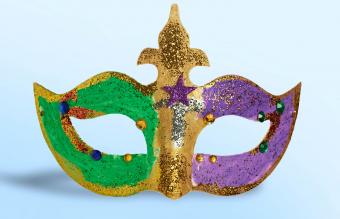
A Meeting of Minds and Talents
Who'd have thought painters would have a part in the history of ballet costumes? Since ballet is such a beautiful, visual art, it shouldn't be too surprising that great minds like Henri Matisse and Pablo Picasso had a hand in designing some costumes. It is suggested that the same person design the scenery and the costumes so there will be a great "flow" throughout the show.
The History of Ballet Costumes: Early Days
The history of ballet costumes shows a shortening of skirts and a transition from longer, heavier costumes to less restrictive outfits. If you study the history of ballet itself, you'll see that there's a simultaneous transition from less-skilled dance to more complex moves that almost lead you to believe the dancer isn't even touching the floor.
The 1700s and Beyond
In the 1700s, along with the shortening of the skirts, came the removal of heels from the slippers. It was during this time that costumes changed from ornate (sometimes they even included large wigs!) to simple. The story is now portrayed by the dancers' expressions and movements rather than grand costumes that got in the way of the art of ballet dancing itself.
In 1832, a new women's costume was created for the part of a sylphide in La Sylphide. The creator, Italian choreographer Filippo Taglioni, designed the costume for his daughter. She performed the role of the main character, the fairy-like sylphide. The costume consisted of an airy white skirt that fell to about mid-calf. He allowed her to leave her arms, neck, and shoulders uncovered on the stage. The costume was a hit. It also set the stage for later costumes consisting of tutus and skin-baring bodices.
Now, the costumes don't hide many movements at all, much like the costumes for other types of dance. The skirts end above the knees and the bodices are snug and show off the lines of the body. After all, what's the point of learning complicated moves if no one can see and appreciate them? The traditional ballet costume is a shorter tulle skirt with a fitted, lined bodice. You can see the rapid pace of the feet, the necessary strength in the thighs (although the good dancers make it seem effortless), and the dancer's graceful posture.
The History of Ballet Shoes
As mentioned above, ballet slippers originally had heels, but they were removed in the 1700s. Simplicity became the key in not only the costumes, but also in the shoes, to allow dancers to really evoke emotion through the movements in their performances.
In the early days, ballerinas had to break in their shoes, and those shoes usually didn't make it through more than one performance. They were made of glue, burlap, and paper (toe box), cardboard or fiberboard (midsole), and pleated satin (outside). It's no wonder, looking at these materials, that the shoes became too soft to be useful after more than one performance. They were also loud, clunky, and didn't fit the illusion of the dancer floating in mid-air. Old pointe shoes actually contributed to quite a few ankle injuries as well.
Dancers now start out in soft slippers until they have their technique down pat. It takes years of experience before it's even recommended for a ballet dancer to don a pair of pointe shoes with their new, stiff soles. Even when it's time to use a pointe shoe, dancers can only do small spurts of activity in them, and then move back into the slippers. Over time, a dancer can wear the pointes for longer periods. There's no more breaking in required; the dancer just has to work up to that type of shoe, but the shoes are ready when the dancer is.
Pointe shoes are still often made of pink satin on the outside (though now they can be dyed to match the costumes), and they offer more support so the likelihood of injury is less. Another good thing about the new pointe shoes is the heightened comfort levels compared to the pointe shoes of earlier days.







